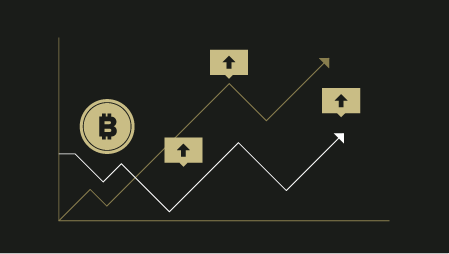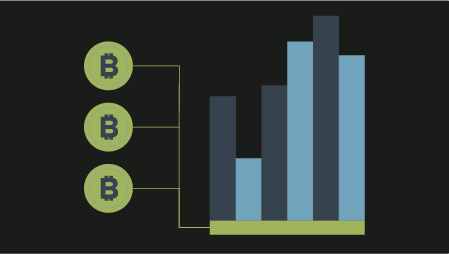The blockchain ecosystem is rapidly expanding. New blockchains or different consensus mechanisms are announced continuously, resulting in a more mature ecosystem. For blockchain technology to achieve wide-scale adoption, a decentralised ecosystem has to be developed. To achieve a decentralised society, many more components need to be built, requiring global standards and large investments.
I estimate that it will take another 3–5 years before the ecosystem is ready for full-scale, enterprise adoption. Apart from the different industry layers that need to be developed, we will also continue to see new distributed ledger technologies and more exciting decentralised applications. The blockchain ecosystem consists of multiple layers, which you see in below infographic.
With the blockchain ecosystem evolving, new applications and technologies come into play as well. Therefore, here are five blockchain trends that you should consider in the coming year:
Trend 1: The convergence of blockchain and other emerging information technologies
Blockchain is not a standalone technology. Especially the convergence of blockchain and technologies such as big data analytics, IoT or AI will be disruptive. This convergence will greatly affect how organisations should approach data and how they can derive insights from it. It will require new solutions and approaches from organisations, regulators, and individuals to ensure that, in the end, everyone can benefit from data. In the coming years, we will increasingly see this convergence in real life.
Connected devices and online services will increase the amount of data available, that can be analysed by smart algorithms. IoT devices will be able to perform microtransactions using a cryptocurrency and Blockchain will ensure that any data transferred between different actors will be immutable, verifiable and traceable. In addition, any smart contract recorded on a blockchain will enable intelligent automation, where the output of one smart contract can become the input of another, thereby creating smart decentralised autonomous organisations.
The convergence of these emerging technologies is rapidly changing how we live, work and run our societies. It is important for organisations to investigate how these technologies can be used to create a better, more inclusive, fairer and transparent society while respecting citizens’ privacy and security and ensuring a healthy bottom line.
Trend 2: The rise of the Blockchain-as-a-Service solutions
Nearly every technology can be turned into an ‘as-a-service’ solution and blockchain is no different. We see more and more offerings of a Blockchain-as-a-Service (BaaS). These cloud-based solutions enable organisations to develop and launch decentralised applications quickly. The cloud-based service provider will ensure that the required infrastructure runs smoothly. It is an interesting development, as with any ‘as-a-service’ solutions the availability of a BaaS will speed up adoption of blockchain among organisations.
Multiple organisations are already offering a BaaS solution. Of course, companies such as Amazon, Microsoft and Oracle offer an easy-to-install blockchain solution. Most of these solutions offer various type of blockchains, including Ethereum, Hyperledger, Corda or Fabric. The main advantage of a BaaS solution is that organisations pay as they go, without any upfront costs. This allows organisations to quickly experiment with various blockchains to understand which technology works best for their organisation. In the coming year, we will see more Blockchain-as-a-Service solutions appear and adopted by organisations.
Trend 3: The best of both worlds with a hybrid blockchain – private & public
Since the inception of bitcoin, there has been a big debate going in the blockchain world. Some groups argue that a public blockchain is the only real blockchain, while others argue that private blockchains will be the most disruptive. This debate can now be laid to rest with the arrival of hybrid blockchains. These blockchains aim to use the best of both worlds by ensuring controlled access but freedom at the same time. Since only known actors have access to the network, a 51% attack is a lot less likely (though of course not impossible, it would just be known who did it).
Within a hybrid blockchain, it is possible to restrict the visibility of certain information on the network. Some transactions can only be visible by the biggest players in the network, while other transactions are visible to anyone. Private transactions benefit from a network that is scalable, secure and fast, while the public chain ensures trustless transactions. Hybrid blockchains are useful for regulated markets, where not all information should be seen by all parties. I foresee that hybrid blockchains will become very popular in the years to come.
Trend 4: Ricardian contracts not only define intentions but also execute instructions automatically
Smart contracts have been dubbed the killer application of blockchain technology. They may seem revolutionary, but smart contracts are nothing new and have been around for a long time. For example, smart contracts are already in place in most modern office buildings. For example, access cards that determine whether you are allowed entry to a certain area are pre-defined by a piece of code and linked to a database.
However, there is one problem with existing smart contracts, which is that they are not legally binding. As a result, in 2018, there has been a renewed interest in Ricardian Contracts. These types of contracts differ from smart contracts that they are legally binding, and it records the agreement between multiple parties in a human-readable and machine-readable text (contrary to smart contracts, which only executes what is defined in an agreement). This means that it is a legal contract that is easy to read and understand by everyone, so not only your lawyer.
Ricardian contracts use cryptographic signatures for legal agreements. If there is a dispute among parties involved, the case can be decided in court, which is not the case with smart contracts. Once a human-readable agreement is turned into a machine-readable agreement, it can be hashed. The hash is then stored on a blockchain. As a result, each part of the document can be uniquely identified by its hash and it becomes impossible to change the original agreement without the other parties knowing. Ricardian contracts are, therefore, extremely secure. We can expect to see a lot more applications benefitting from Ricardian contracts.
Trend 5: The rise of the Security Token Offering, replacing the Initial Coin Offering
A security token is a token that allows the owner of that token a (future) stake in the company, whether it be in the form of dividends, revenue share, or a price appreciation. It constitutes an investment contract and, hence, attracts the attention of the Security and Exchange Commission (SEC).
Distributing security tokens is done during a Security Token Offering (STO). Depending on how the STO is structured, it can give the investors a lot of benefits, such as the ability to voice their opinions through voting, gain access to dividends and other rights based on the proportionate ownership in the underlying asset or company. However, an STO not only benefits the investors, but it also has significant benefits for the issuer as well as other stakeholders such as regulators. In brief, programmable security tokens offer five benefits over other tokens:
Final Thoughts
Blockchain, particularly when used in concert with other technologies, offers organisations an opportunity to rethink their internal and external processes, remove inefficiencies, improve transparency and provenance, and build a better organisation overall. However, the examples of security tokens, hybrid blockchains and Ricardian contracts show that the blockchain ecosystem is constantly evolving. This requires organisations to keep their eyes open and be aware of the changes happening when they want to get involved with blockchain. These are exciting times to be a life, and I am looking forward to seeing how this field evolves in the coming years!




